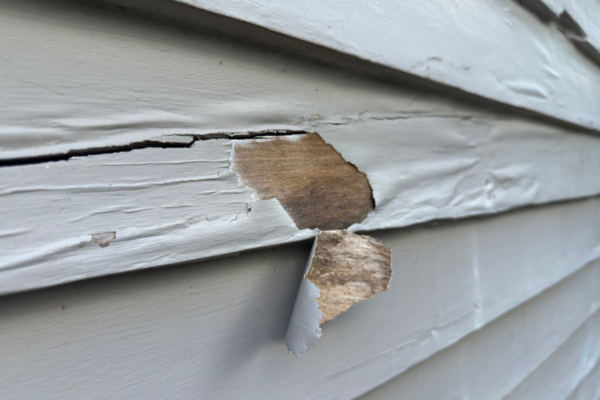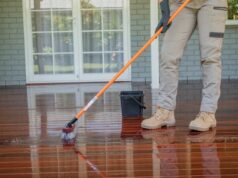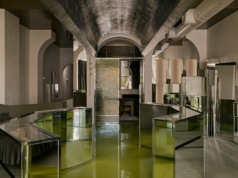
Paint peeling off walls is an unsightly issue that we may face from time to time. Beyond the aesthetics, without paint protecting the surface, the underlying wall material can also become damaged.
Flakes, bubbles, spidery cracks and holes in the paint surface are all signs that something isn’t right, but how do you fix it? This guide by painting and decorating expert Pat Gilham at MyJobQuote.co.uk will explore the reasons behind peeling paint, how to solve the problem and how to prevent further peeling in the future.
What causes paint to peel?
Understanding the root cause is key to addressing peeling paint issues and fixing them for good. Here are some of the main reasons why you might be facing problems:
Moisture and humidity
Moisture or water around paint will cause damage and leaks; high humidity and condensation can all cause it to loosen and peel off. When moisture seeps into the wall, the adhesion between the paint and the wall surface can weaken. Stop any moisture problems immediately at their source and invest in moisture-resistant paints for rooms such as kitchens and bathrooms.
Using the wrong kind of paint
Different surfaces require different types of paint, and using a paint that isn’t suited to that particular type of surface can result in peeling or flaking. Low-quality paint can also be an issue, as it is often thinner, requires more coats and doesn’t adhere well to surfaces, so it is always well worth investing in a good-quality brand.
Incorrect use of painter’s tape
When selecting your painters’ tape, it is important to know the right brand, adhesive level and timing for removal. A common reason for fresh paint peeling is removing the tape after it has dried. Remove the tape slowly, if you hear tearing noises, you are moving too fast. It is a good idea to score the tape with a razor blade before removing it to break the bond between the paint and the tape.
Insufficient surface preparation
Paint will not adhere well to uneven, unprimed or dirty surfaces. Applying paint onto any surfaces with dust or oil residue will lead to bubbling and peeling. Take a damp cloth or sponge to remove any dirt, followed by soap to remove grease or oil. Let the area dry completely before adding primer and the first coat of paint.
Inadequate drying time
We have all been in situations where we want to get a job done as quickly as possible, but adding an extra coat of paint on top of one that has not yet properly dried will leave us with more work in the long run. You should also wait at least 24 hours before painting over the primer to avoid peeling, bubbling and flaking.
How to fix peeled paint on a wall
Once you have discovered what has caused the paint on your wall to peel, you can begin to address the issue. Obviously, if there are underlying causes such as leakages, these problems will need to be dealt with first, but this step-by-step guide will see you through the process of patching up and repainting when the time comes!
Remove peeling paint: Using a wire brush, paint scraper or sandpaper, gently remove the peeling paint. Be careful not to damage the wall surface as you do so, as this will lead to more issues in future.
Repair the surface: Fill any holes or cracks in the surface of the wall with patching material, carefully applied with a putty knife. Sand over the area with strong sandpaper to create a smooth surface to work on.
Clean the area: Wipe down the wall to remove any dust and debris that may have been created in the sanding process. This will ensure a clean surface for painting.
Prime the area: Apply a good-quality primer to the repaired area before applying your first coat of new paint. This will help the paint to adhere to the surface.
Repaint: Once the primer is dry, repaint the area with a matching paint colour (or different if you are repainting the entire wall) to restore the appearance of the area.
By following these steps, you can effectively repair the peeling paint and improve the look of your walls. Just remember that patience is key; don’t rush the job!
How to prevent future peeling
With an understanding of what causes paint to peel, you are equipped to prevent it from happening again in future. Here are some key points to be mindful of:
- Always clean the surface and remove any old paint before repainting.
- Use a dehumidifier or extractor fan in particularly humid rooms to keep moisture levels in check.
- Allow any kind of wood to dry out completely before painting it.
- Think carefully about the surface that you are painting and what type of paint is compatible with it.
- Always use good-quality paints and primers to ensure that the paint adheres well to the surface of the wall.
- Take it slowly – peeling back tape or applying new coats prematurely can lead to unwanted bubbling, flaking and peeling.
Fixing peeling paint may seem like an overwhelming task, but with the right care and materials, it can be very simple. Just ensure that when you reprepare and repaint the affected area, you are mindful of the issues that could lead to it happening again in future and take the appropriate preventative measures.




